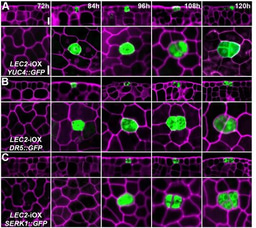WheatOmics: Launching a New Journal for Triticeae Research
Published in Bioengineering & Biotechnology, Sustainability, and Genetics & Genomics

Explore the Research

WheatOmics
WheatOmics is an open access international, peer-reviewed journal that publishes excellent, novel research on the broadest aspects of wheat and other…
 Editor-in-Chief
Editor-in-Chief
Prof. Xiansheng Zhang
Director, State Key Laboratory of Wheat Improvement
Shandong Agricultural University, China
Research Interests:
Plant stem cells and meristem, Plant cell totipotency,
Wheat genetic transformation and regeneration
What inspired the launch of the new journal, WheatOmics?
Prof. Xiansheng Zhang:
There are thousands of wheat related papers published each year; however, there is no specialized international journal exclusively focused on Triticeae crops. Wheat functions as primary food for approximatley 40% of the world’s population and contributes up to 20% of dietary protein. With an expected 60% yield increase by 2050, and considering the large scientific community engaged in wheat research, we saw a clear need to establish a journal that could serve this community.
My mission is to provide an excellent platform for the Triticeae research community that will serve as a hub for insightful innovations, technological advancements, and interdisciplinary collaborations.
What new opportunities do you see emerging in wheat research?
We are in an exciting era of discovery. Acknowledging all that plant researchers have accomplished over the past century, it’s truly exciting to see how the omics, genome editing, and artificial intelligence (AI) revolutions enable us to accelerate breeding timelines by designing varieties rather than selecting from random pools of natural variations. Wheat research has entered into a post-genomic era, powered by technologies such as RNA-seq, high-throughput DNA sequencing and integrated omics platforms. Wheat genome sequencing has enabled scientists to rapidly develop advanced genetic tools, gene discovery pipelines, molecular breeding strategies, and systems-level approaches.
Modern tools, including genome editing, bioinformatics, AI, and computational systems have significantly increased the number of wheat-related publications. For instance, a scientometric study showed that approximately 11,500 wheat-related articles were published in 2023 by the top ten contributing countries, and this number continues to rise. This surge in data and innovation opens up exciting new prospects to improve wheat production, stress resistance, and nutritional quality. It also highlights the growing need for a specialized platform like WheatOmics, to showcase and support these advancements in the global research community.
What is the vision and scope of WheatOmics?
WheatOmics was created with a clear vision to provide an excellent interdisciplinary platform that can serve the Triticeae research community by publishing innovative research and promoting collaboration across diverse disciplines.
Our aim is to establish WheatOmics as a rigorously peer-reviewed flagship journal for Triticeae research. It covers a broad range of research areas including agronomy, breeding, biotechnology, bioinformatics, genetics, genome editing, functional studies, microbiomes, physiology, AI, and many more fields with full or partial integration of omics to address biological challenges in wheat and other Triticeae species.
In addition, WheatOmics welcomes submissions involving model plant research that reveals mechanisms or methods potentially applicable to Triticeae species. Currently, no other journal offers this level of dedicated interdisciplinary focus for Triticeae crops.
How is WheatOmics expanding its international influence, and what benefits does it offer to authors?
WheatOmics is actively expanding its global presence by building a diverse and internationally recognized editorial board, and is committed to maintaining high publication standards through rapid, fair and rigorous peer review. To further support international collaboration and accessibility, WheatOmics is published as an open access journal through Springer Nature.
Notably, the article processing charges (APCs) will be fully waived for all authors from 2025 to 2027; special thanks go to generous sponsorship from the Shandong Agricultural University. This initiative aims to encourage wide participation especially from young and early-career researchers around the world.
What do you think are the main opportunities and challenges facing the journal in the future?
Launching WheatOmics is both an exciting opportunity and a bold responsibility. One of the biggest opportunities is to establish a vibrant, high-impact platform that serves as the flagship journal for wheat and Triticeae research. By fostering innovation, interdisciplinary and global collaboration, WheatOmics can help shape the future of Triticeae research.
At the same time, we recognize the challenges. Attracting high-quality submissions in the early years, ensuring rigorous yet fair and efficient peer review, and building trust within the global research community are all essential tasks. We are committed to meeting these challenges by maintaining strong editorial standards, and fostering a community that values quality, transparency, and collaboration.
My vision is for WheatOmics to become the go-to journal where researchers confidently publish original research, reviews, methods, and perspectives that advance science and address global agricultural challenges.
What are your plans for the future development of WheatOmics?
We are committed to establish WheatOmics as a global platform. We aim to seek inclusion in key indexing databases and to position WheatOmics as reputable Q1 journal. We plan to launch thematic special issues that address the key challenges of Triticeae research and expand the editorial board to increase international participation. We will host an online forum or webinars to engage the scientific community and promote the sharing of ideas. Our objective is to progressively improve the journal's impact while maintaining high-quality standards and broad accessibility.
Is there anything you'd like to say to the global Triticeae research community?
I am incredibly grateful for the exceptional team of editors, reviewers, and editorial staff that have come together with dedication and expertise to support the mission of WheatOmics. The launch of WheatOmics marks the beginning of this exciting journey.
I warmly invite researchers, scholars, and plant biologists who are engaged in Triticeae research to submit your exciting research discoveries to WheatOmics. Please join us in advancing Triticeae research and being a part of this exciting new platform.
Submit your manuscript today at: https://link.springer.com/journal/44412
- Contact the Editors-in-Chief:
- Xiansheng Zhang: zhangxs@sdau.edu.cn
- Editorial Office: wheatomics@sdau.edu.cn
Follow the Topic
-
WheatOmics

This journal is an open access international, peer-reviewed journal that publishes excellent, novel research on the broadest aspects of wheat and other Triticeae species.
What are SDG Topics?
An introduction to Sustainable Development Goals (SDGs) Topics and their role in highlighting sustainable development research.
Continue reading announcementRelated Collections
With Collections, you can get published faster and increase your visibility.
Integrating multi-omics to empower next-generation wheat breeding
This topical collection centers on integrative omics in wheat, emphasizing how genomics, transcriptomics, epigenomics, proteomics, metabolomics, and phenomics, combined with systems biology and computational modeling, are reshaping wheat biology and breeding. The rapid growth of large-scale, high-quality omics datasets offers unprecedented power to elucidate gene function, regulatory networks, and the architecture of complex traits, thereby enabling precision strategies to improve yield, resilience, and grain quality. Against the backdrop of global food security, climate change, and sustainability imperatives, integrative omics provides a holistic view of genotype-phenotype-environment relationships. By connecting molecular layers to field performance, these approaches accelerate the discovery of causal variants and regulatory circuits, refine trait prediction, and inform the rational design of wheat ideotypes with enhanced productivity, stress tolerance, and nutritional value.
We seek innovative studies that integrate multiple omics in wheat or substantially enable such integration, offering a platform to share: original research that dissects complex traits and delivers breeding-ready targets, markers, models, or germplasm; FAIR-compliant data resources and databases (e.g., pangenomes, variation maps, single-cell/spatial omics); computational methods for cross-omics fusion, causal inference, network reconstruction, and genotype–environment modeling; big-data analyses, benchmarks, and interoperable pipelines; and concise reviews, perspectives, or methodologies that synthesize best practices and future directions.
Possible topics of interest include but are not limited to:
• Genomics, pangenomics, and structural variation analyses in wheat
• Transcriptomics, small RNA profiling, and regulatory network mapping
• Epigenomics, chromatin dynamics, and stress-responsive gene regulation
• Proteomics and metabolomics for functional characterization of key pathways
• Systems biology and network-based modeling of wheat traits
• Integrative multi-omics analyses to dissect traits in wheat
• High-throughput phenotyping and omics-assisted trait prediction
• Data-driven approaches linking omics datasets to wheat breeding pipelines
• Integration of big data and machine learning for trait prediction
Publishing Model: Open Access
Deadline: Jan 31, 2026


Please sign in or register for FREE
If you are a registered user on Research Communities by Springer Nature, please sign in